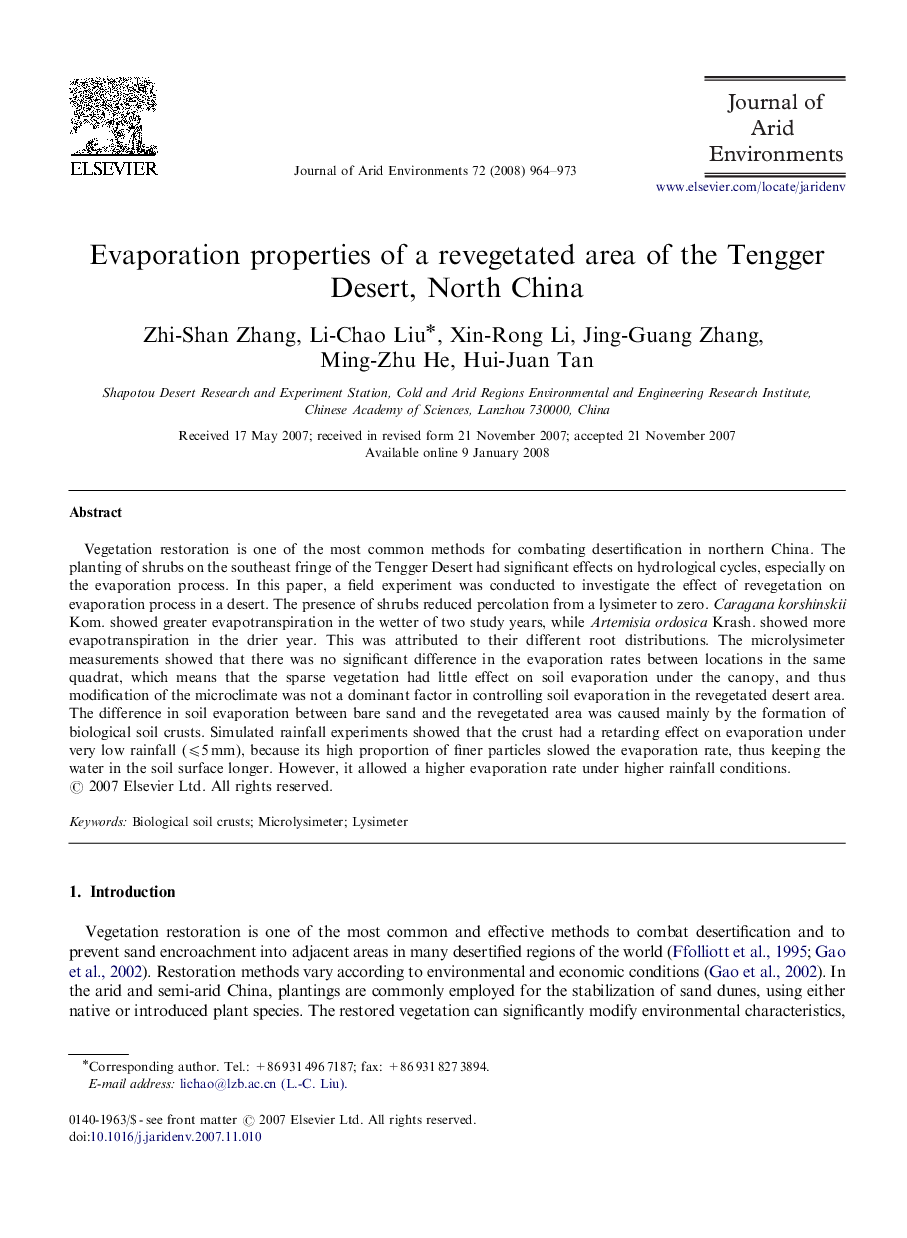| Article ID | Journal | Published Year | Pages | File Type |
|---|---|---|---|---|
| 4394263 | Journal of Arid Environments | 2008 | 10 Pages |
Vegetation restoration is one of the most common methods for combating desertification in northern China. The planting of shrubs on the southeast fringe of the Tengger Desert had significant effects on hydrological cycles, especially on the evaporation process. In this paper, a field experiment was conducted to investigate the effect of revegetation on evaporation process in a desert. The presence of shrubs reduced percolation from a lysimeter to zero. Caragana korshinskii Kom. showed greater evapotranspiration in the wetter of two study years, while Artemisia ordosica Krash. showed more evapotranspiration in the drier year. This was attributed to their different root distributions. The microlysimeter measurements showed that there was no significant difference in the evaporation rates between locations in the same quadrat, which means that the sparse vegetation had little effect on soil evaporation under the canopy, and thus modification of the microclimate was not a dominant factor in controlling soil evaporation in the revegetated desert area. The difference in soil evaporation between bare sand and the revegetated area was caused mainly by the formation of biological soil crusts. Simulated rainfall experiments showed that the crust had a retarding effect on evaporation under very low rainfall (⩽5 mm), because its high proportion of finer particles slowed the evaporation rate, thus keeping the water in the soil surface longer. However, it allowed a higher evaporation rate under higher rainfall conditions.
